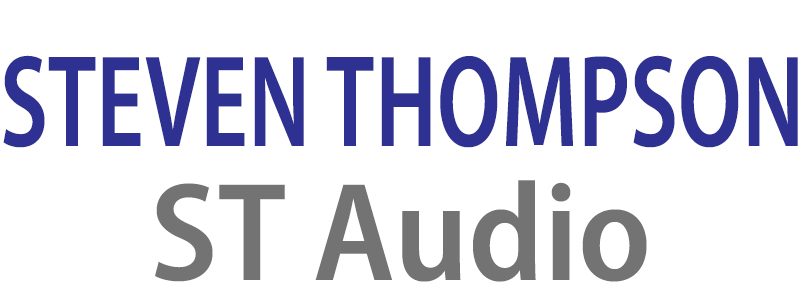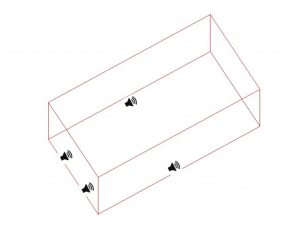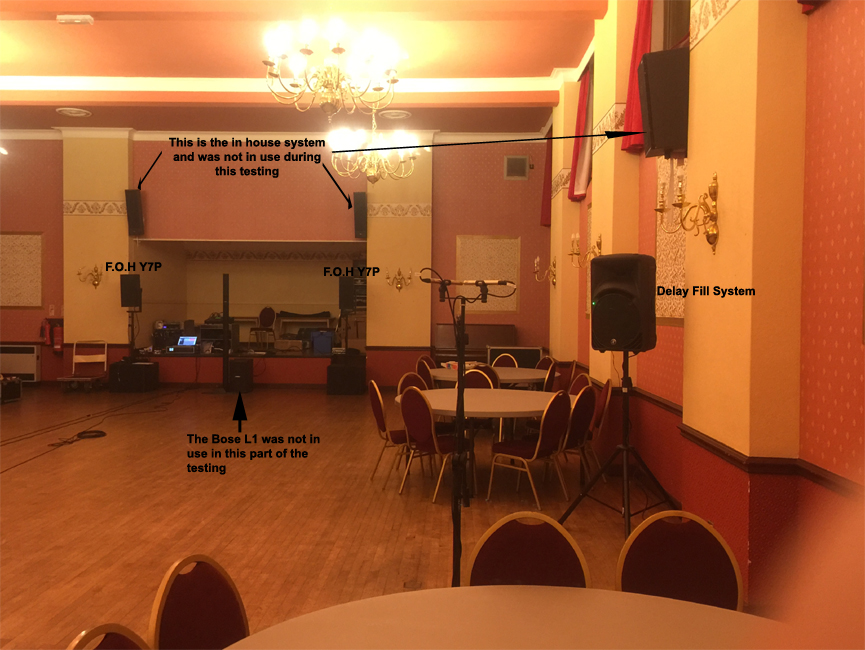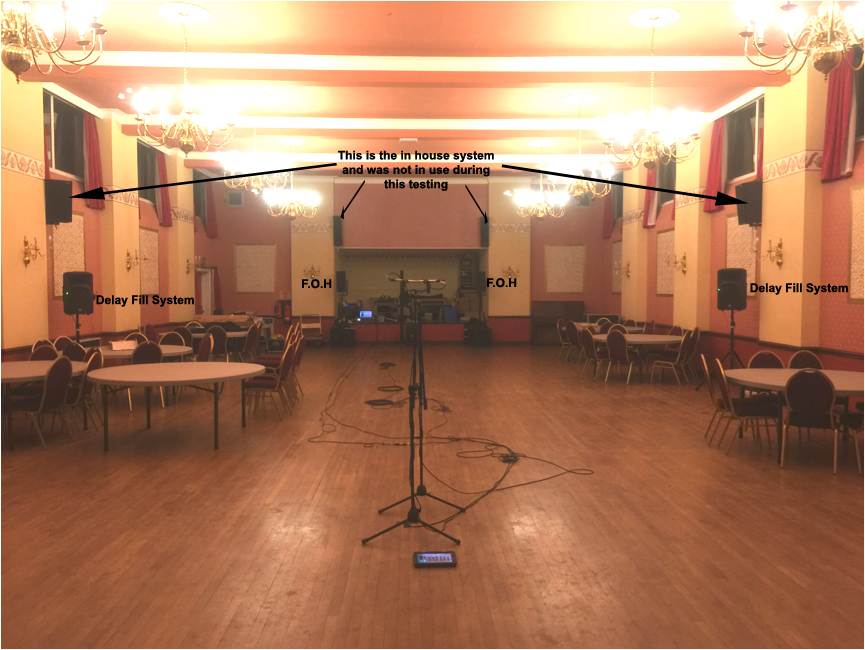During an investigation ahead of writing the project, a distributed system’s advantages to intelligibility were considered.
In addition to a left – right front of house P.A., two additional loudspeaker were deployed 10m further down the venue:
Here’s a quick example of improving intelligibility of P.A. with a delay-fill system
The following audio recording was made at the microphone position shown in this photo:
First you’ll hear only the F.O.H. P.A (which was the Y7P pair left and right of the stage).
Then 9 seconds in, the pair of delay fill loudspeakers are un muted (the F.O.H system also stays on). The remainder of the audio file is the full delay fill system at this location.
Perhaps that would be expected being that the microphone (i.e. the listening position) was so close to that particular delay fill speaker.
So let’s take a listen in a more central position towards the back of the hall.
The stereo pair of microphones (AKG C451 matched pair), were then moved to the following position:
First you’ll hear only the F.O.H. P.A (which was the Y7P pair left and right of the stage).
Then 6 seconds in, the pair of delay fill loudspeakers are un muted (the F.O.H system also stays on). According to their distances apart, there’s 27ms delay added to the delay-fill system. The remainder of the audio file is the full delay fill system at this location, but at 16 seconds through the audio file, a high pass filter, (rolling off lows from 120Hz downwards at 12dB per Octave) is introduced. Having noted low frequency resonance in this hall and being that frequencies bellow 120Hz are unnecessary for this particular type of speech, the EQ adjustment was made to see if intelligibility at this location could be improved further.
How critical is making this improvement though; it’s clearly some extra effort to set up!? That of course very much depends on the event, (and possibly more pertinently, the budget). A case could be made for it being possible to understand what was being said even before the delay fill system was put in. Taking a listen to some audio online is however likely to be a cleaner listening context than in the real case. Consider that this hall and the P.A. system were being used for an awards presentation night: Factor in a louder background level of audience chatter and the general noise akin to 250 people in a hall, and then consider the listening fatigue after trying to concentrate on the person speaking after a while.



